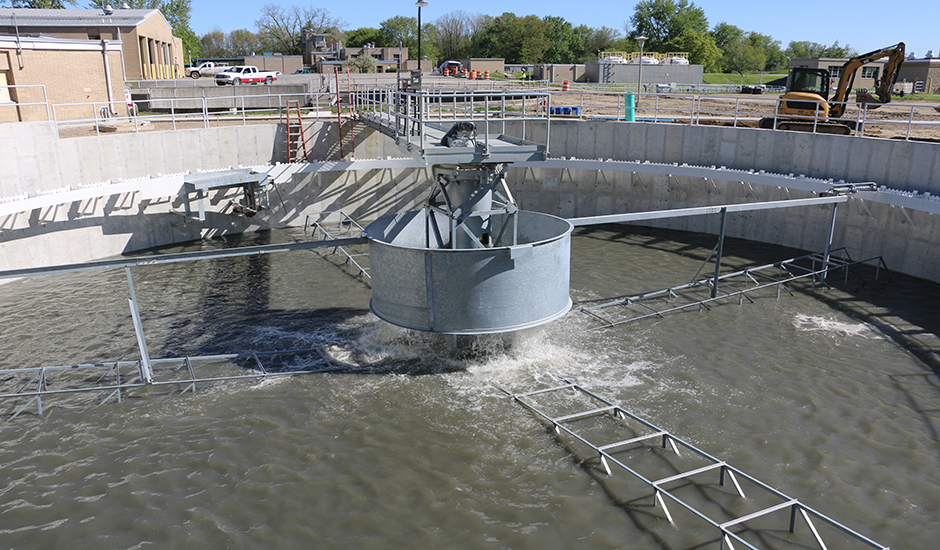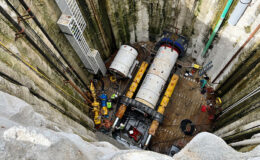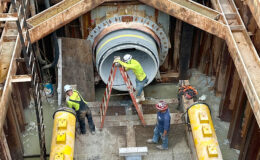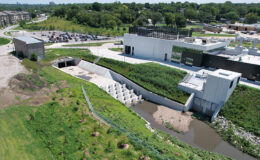Committed to optimizing its wastewater treatment capabilities, the City of Jackson, MI, added a new, circular primary clarifier to its wastewater treatment plant (WWTP) and is preparing to upgrade its disinfection system. Designed to treat a maximum flow of 18.8 million gallons per day (MGD), the WWTP includes two existing rectangular primary clarifiers dating to 1933 and 1959 and one circular primary clarifier from 1977. The new clarifier was designed to improve the WWTP’s reliability, efficiency and maintenance flexibility by allowing existing primary tanks 1-6 to be removed from service while still meeting 10 States Standards requirements.
Construction of the new clarifier required excavation 25 feet below grade into bedrock, below the water surface elevation of the nearby Grand River. Careful consideration was required during the structural design phase to address potential uplift due to high groundwater. Soil borings and exploratory excavation were available to bidders so existing conditions were clear. Determining the clarifier’s weir elevations was also a key design consideration to enable splitting the flow evenly between the new and existing circular tanks and to enhance operations. Wade Trim provided field survey, civil/site layout, process and structural design, permitting and cost estimate preparation, and bid and construction phase services for the new clarifier project.
Wade Trim has begun design of the WWTP’s upgrade to UV disinfection technology to eliminate the use of chemicals, benefitting staff safety and the environment. After evaluating potential UV systems and apparatus, Wade Trim recommended housing the UV process in an existing chlorine tank to avoid construction of new underground structures. Building Information Modeling (BIM) is being used to recommend modifications to the existing structure to accommodate narrow vertical spacing and challenging hydraulics requirements. Only three of the WWTP’s five chlorine contact channels are typically used, leaving two channels available to site the UV system with minimal impact on existing operations during construction. The UV disinfection upgrade is anticipated to be complete in 2018.







